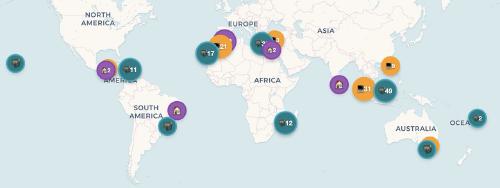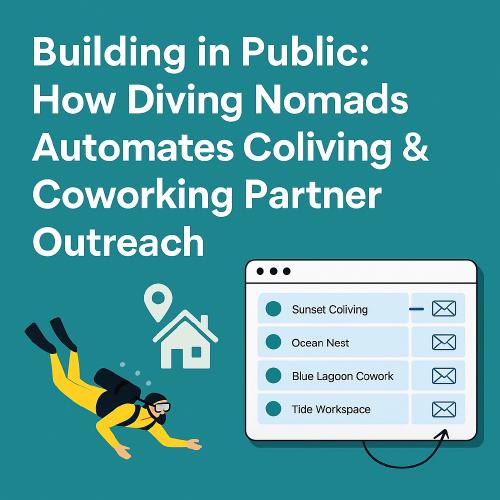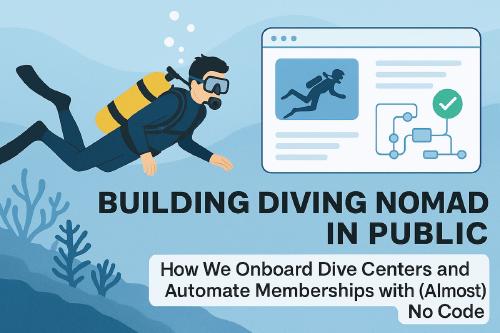Organizational Change and Leadership — Driving change effectively within organizations
Many people believe that you have to be in an official leadership position with official authority and power to lead change in organizations. This is far from the truth. I would even argue that it is easier to drive successful change if you do not have that formal authority. This is because without formal authority, you have to lead the change right (we will get to that in a bit). With formal authority, on the other hand, you can force the change, which can lead to frustration, resignation, and damage to the organization overall. Even worse, people might not speak up against change that they do not understand or that does not make sense to them. Therefore, whenever being in a leadership position with formal power, be extra cautious about how you drive change. In my article about organizational tension processing, I already tapped into an approach how we can initiate change in organizations without formal (hierarchical) authority. In today’s article, I explore the topic of how to drive the actual change and how to ensure that it becomes a success, in greater detail.
Understanding Organizational Change
Before diving deeper, it is essential to clarify what we mean by organizational change. Organizational change refers to the processes through which organizations alter their strategies, structures, processes, technologies, or culture to adapt to internal and external pressures.
Seeing the organization as a product from and for the people within
Every organization exists to serve a certain purpose, and it serves this purpose through the people within that organization (and their products/services, of course). An effective organization is one that enables the people in that organization to do their best work. In a sense, the organization is a product that is built for the people in that organization. At the same time, it is a product that is built by the people in the organization. Therefore, we can learn a lot about building great organizations from how we build great products. — With the important difference that change is much harder when it involves humans, compared to a change that involves mostly code. — “Deploying a change” therefore has to look vastly different. Nonetheless, there are some similarities about
- how we know what to change,
- how we approach change, and
- how we measure the success of a change.
Change incrementally and continuously
One of the cornerstones of successful product development in complex environments is to make changes incrementally. We do not build products in the dark, doing a big bang release, finding out nobody needs it, or it doesn’t solve the problems we wanted to solve. Modern products change and improve one deployment at a time. — Incrementally and continuously. With organizational change, it should be the same. One reason why I love the tension-based approach so much is because it does exactly that: Changing the organization by addressing one tension at a time. This is in stark contrast to bringing a consultant in, doing a big-bang transformation and then hoping that the new organizations magically will withstand the test of time. If you bring in consultants, make sure they help your organization to become more flexible and able to change and reinvent itself as needed. (If you consider this, let’s talk.)
Focus leads to speed and success
It is easy to work on too many features at a time. The consequence is that everything takes longer, conflicts arise, and the changes influence each other negatively. Teams who work on too many features in parallel often do not take the time to assess if the feature actually satisfied the customers and solved their problems, as they are already busy building the next thing. The same can happen with organizational change initiatives as the lack of focus might cause people to become confused. Furthermore, as change takes time and repetition, changing too many things at once can lead to following through until a change has really settled.
Talk to your customers
Before we build a product or change the product in a certain way, we should make sure to truly understand our customers, their needs, and problems. Only then we can build a product that is really useful to them. With organizational change, the customers are the people within the organization, more specifically the people affected by the change. I have seen a lot of damage done in organizations because formal leaders just attempted to split or merge teams without talking to the people involved. The fallout was huge. In a sense, they built the wrong product because they did not talk to their customers.
Success is measured with focus on customers
In product development, we should not focus on output as a measure of success but on outcomes achieved for customers. With organizational change, it is not different.
- Does the change help people to do their work better?
- Can they work more efficiently and effectively?
- Are they more satisfied and enjoy their job more? If change does not yield any improvements in these dimensions, it should be considered a failure, and we should find and try another approach.
A product of the people within the organization
One crucial difference to building a product like a SaaS service is, of course, that the organization is a product of the people and their relationships with each other and with the purpose of the organization. And this is something that cannot be controlled through formal power. I have worked with organizations where leadership felt highly impactful while deploying an organizational transformation, just to find out that people in the organization kept working like before. The organization looked good on paper, but the paper had nothing to do with reality. Therefore, effective and successful change needs buy-in and support of the people within the organization.
What about the CEO? The founders? The investors?
I already can hear people arguing, that the actual customers are, in fact, the CEO, the founders, or the investors. Because, after all, they are paying for all of that. Right? I would argue that those stakeholders are not customers to the organizational structures and processes, but only to the companies ability to fulfill its purpose. And like customers of a SaaS product should not dictate the software architecture of that product, those customers should not dictate the architecture of the organization. This, of course, does not mean that we should ignore their needs and do whatever we want. — We should establish mutual trust and transparency to make sure we are evolving an organization that fulfills its purpose in the best way. Furthermore, while those stakeholders might pay money, they have a hard time to just walking away if they don’t like the “product”. Other people in the organization pay with their time, commitment, and loyalty but can walk away easily, if they don’t like the “product” (the organization).
How to drive change
1. Start with why
People don’t buy what you do; they buy why you do it. — Simon Sinek When we want to drive change, we first need to set the stage:
- What do we want to achieve?
- Where are we today?
- What are our tensions with the current conditions? We need to help people to see the challenges that we are seeing. Only when people see and understand this, they can think about solutions or verify that our solution idea could work. As leaders, we often have ideas of how the change should look. After all, we are paid for solutions, not problems. Right? The issue with this is that we frequently neglect the different knowledge, understanding, and awareness of the people around us. They might not even have understood the problem nor do they understand why our solution is the right one (and maybe it is not) Instead of skipping ahead to proposing the solution, we need to take a step back and explain why we see the need for change.
2. Involve affected people in defining how the change needs to look
I have heard people say, that other people don’t like (to) change. This does not sit right with me. People change all the time. — They get married, buy houses, move to different countries, start a new hobby, change jobs, … — All of these are massive changes. The difference is that all of these are changes where people understand the reasons behind the change and can influence the change.
People don’t resist change. They resist change done to them. — Me The quality of solutions increases through the amount of diverse and divergent thinking that went into them. Furthermore, if we involve people into the process of finding or defining a solution, they have the opportunity to question it and to understand why the solution is, in fact, the best solution we could come up with. Common sources of resistance include fear of the unknown, loss of control, or perceived threats to job security. To address these challenges, it’s crucial to create a safe environment where people feel comfortable expressing their concerns. Leaders should actively listen to feedback and show empathy toward those affected by the change. Providing clear communication about the benefits of the change and how it will impact individuals positively can help reduce fears and build support.
3. Repetitive communication and transparency
People are busy, and your change initiative is probably the last thing on their mind. Thus, it is important to be proactive with the communication and repeat it from time to time so that everybody can understand, how the change is progressing. For example, when we introduced continuous deployments for 15 teams, we would frequently share where we were on that journey, what would happen next, and how people can give feedback and influence the change.
4. Collecting feedback and adjust
Chances are, that even after discussing solutions together, we will discover obstacles and things we have not considered while implementing the solution. Maybe somebody in the organization suddenly has a tension with how the change is done or progressing. It is essential that this feedback can be surfaced and is used to adjust the change. Therefore, when you are responsible for driving change, make clear that you want and need feedback and how people can give it. Depending on the size of the organization, your position in the organization and the perceived psychological safety of the people in the organization, consider providing options to give anonymous feedback. Be mindful that your psychological safety as a formal leader or senior person might be vastly different from the perceived safety of people in other roles or positions.
5. Persistence and continued support
Lasting change takes time, especially when it involves more than a handful of people. A mistake that I did in the past was to underestimate how much time, repetitive communication and ongoing support a change requires until it could fully settle and is not perceived as a change but as the new normal. Again, people around you might not think as much about the change as you do, as they have other topics more present on their minds. Therefore, it might take significantly longer to establish change and to make sure that everybody has understood, accepted and internalized the new normal. Nothing bad about that, it just means we need to drive the change and remind people about it longer than we might think.
Conclusion
Effective, lasting, and successful change comes from within. This is why we need to engage people with the change and help them to see the reasons for the change and understand the solution. They also have to see that the solution we choose is good enough and safe enough to be tried. Otherwise, resistance might cause our attempt for change to fail. In such cases, leaders with official powers often get frustrated and declare change to push through this resistance. This is the easy approach, but ultimately also the more damaging approach, and it leaves people feeling powerless, overruled and like marionettes. The long-term consequences are people being unsure what they can decide and control and people who stop thinking ahead for the organization. Therefore, especially when in a formal leadership position, we need to be cautious about how we go about driving change. After all, to lead means to inspire, not to control.
To lead means to inspire, not to control. Is organizational change a challenging topic in your organization? I would love to learn more about it and invite you to a free 30-minute conversation on this topic.





Use the share button below if you liked it.
It makes me smile, when I see it.